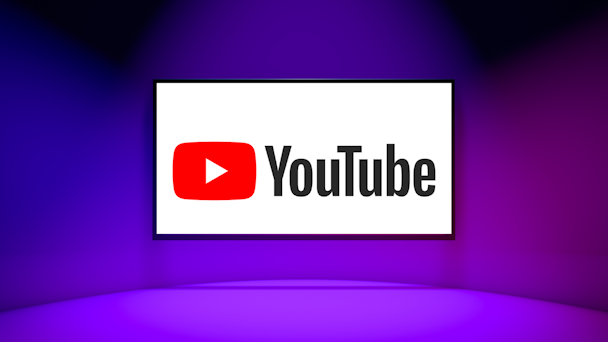YouTube is CTV - and it’s here to stay
Cadi Jones, managing director of Pixability, believes its time we finally accept that YouTube is part of the CTV ecosystem.

There’s never been more buzz around connected TV (CTV). In an industry where it seems that we’re always drawn to the newest, shiniest things - the trend toward CTV in the UK is not following the usual hype cycle.
Looking at the data, it’s clear that we’ve reached a tipping point in both the evolution of the technology and shifts in consumer behavior that point to the reality that we’re no longer in “trend” territory but instead experiencing a complete change that is reshaping the way we consume media in this country. As a result, our industry needs to rethink how we transact and on and categorize CTV today.
Advertisement
What is happening in the UK with OLV and CTV?
Our industry loves its acronyms, so let’s start by defining what we mean by Connected TV (CTV).
-
OLV or On-Line Video: digital video content consumed via any device;
-
OTT or Over The Top: digital video content consumed in addition to a TV subscription;
-
CTV or Connected TV: a TV device connected to the internet and can therefore serve digital advertising.
As many others have pointed out, real TV viewers do not perceive these differences outside of our industry. People switch on their TV and see an ad. They don’t really know whether it is served digitally or via FAST - they see an ad on their TV set.
However, two big things have happened in the UK market in the last two to three years that are impacting CTV.
Firstly, the rise of smart TVs.
Advertisement
As of March 2022, two-thirds of the UK population now have a smart TV. That’s 44.5m people. As you might expect, there was a significant surge in people buying new TVs in 2020 with the pandemic, and we saw a 30% increase that year alone. While there previously had been various devices that could convert legacy TVs into smart TVs, connected TVs were an advancement that made this functionality standard and therefore made it much easier for consumers to adopt the technology.
The second significant shift is more recent and more at a macro level. Around the same time the smart TV technology became more standardized and accessible, the UK also experienced a surge in the cost of living. The cost of living crisis in the UK has driven consumers to think twice about their paid subscription services. For many - without looking to be more advanced technologically - this meant better using Advertising-based Video on Demand (AVOD) supported content.
For those who don’t live in our “acronym soup” industry, this switch to consuming AVOD content was nothing more than a way to save some money. If you talk to them, they won’t know the terms “AVOD” or “SVOD,” but if you ask them - “are you still paying for Disney+?” they’ll say, “No, we’re doing a free trial on X, and then watching a lot more YouTube.”
For them, TV is TV.
What’s holding us back?
When you hear YouTube, what do you think?
Suggested newsletters for you
From my conversations since joining Pixability, most people working in advertising agencies or brands still hear YouTube and think of mobiles and laptops. And while it’s true that YouTube is the perfect platform for you if you need to quickly learn how to bake cornflake cookies or bleed your radiators, it’s entirely possible to target by device - ensuring that your ad will only appear on TVs. And we’re seeing this change in opinion of the platform really start to take shape, especially in agencies.
“We must use a modern definition of ‘TV’ as ‘TV content’ is now consumed in myriad ways. We have aligned on criteria for what we judge as a modern-day equivalent to the linear TV ad experience, and YouTube can meet those standards depending on the targeting applied,” said Chloe Hawking, chief executive of Reprise UK and Ireland, the performance marketing specialist division of IPG Mediabrands.
The other assumption that frequently comes up is that YouTube is purely a platform for User Generated Content. There is a large amount of content that rivals the same high production quality of television that exists on YouTube. I like to think of YouTube as the perfect marriage of digital and linear TV in that there is the same level of quality content in addition to the same granular targeting tactics available on Digital. It is the best of both worlds.
A final limiting factor comes simply from how busy we all are.
It can be too easy to see adding CTV as a box-ticking exercise, throwing a bit of budget to YouTube after spending days on extensive planning for the linear TV exercise. This fails to do justice to the audience that is available and risks the advertiser having a bad experience - for example, seeing poor performance due to wastage of 20-30% of the campaign’s budget is absorbed by content that is made for kids, and your product is geared to adults.
The Perfect Storm
The pandemic, which drove the adoption of CTV devices, followed by the current economic crisis, has shifted user behavior dramatically. This change has caused an exciting opportunity for brands to reach their target audiences cost-effectively on TV.
With the help of their agencies, brands can extend the reach of their campaigns to households who might otherwise not see their ads and at a cost-effective price point compared with linear TV. The role of planning and strategy teams cannot be overlooked, as these changes in consumer behavior and technology are recent, and looking beyond their personal behavior into the data is key.
The UK is in an exciting time, where it’s possible to reach more users than ever before on these connected TVs, and with targeting that will drive real performance for brands. While the cost of living crisis may be causing an increased usage of AVOD, the trend towards smart TVs is not going away, so embrace it.

